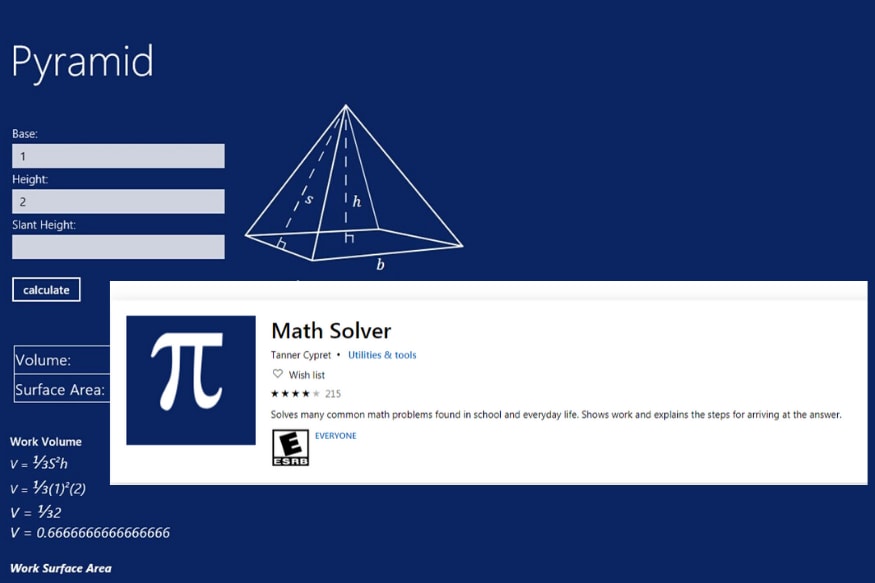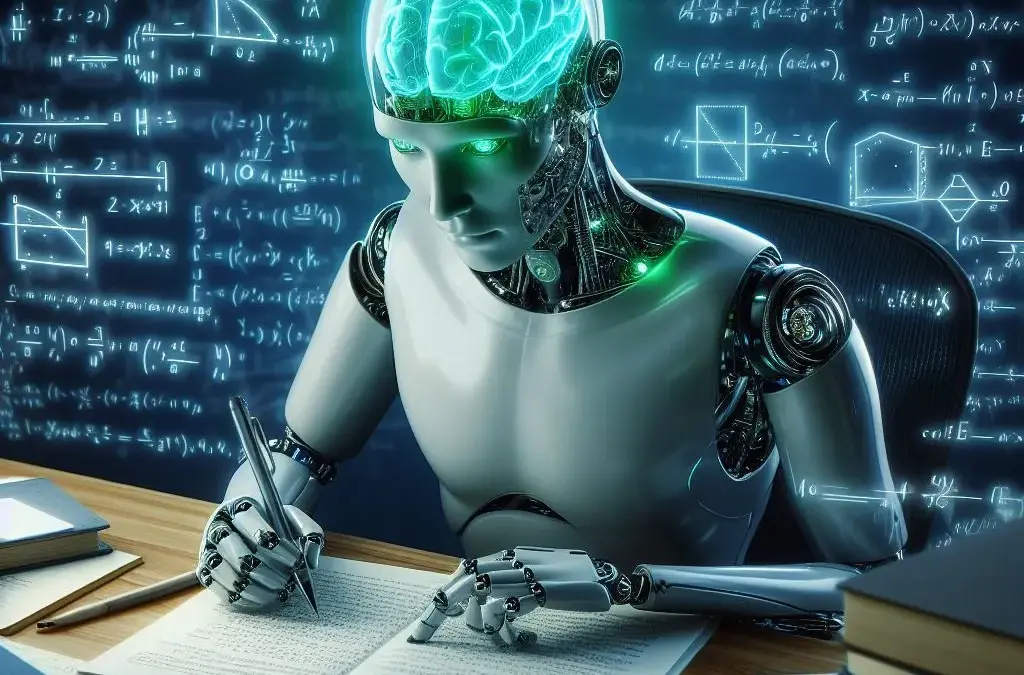The Rise of the Math Solver: From Abacus to AI, and Past
Associated Articles: The Rise of the Math Solver: From Abacus to AI, and Past
Introduction
On this auspicious event, we’re delighted to delve into the intriguing subject associated to The Rise of the Math Solver: From Abacus to AI, and Past. Let’s weave fascinating data and provide contemporary views to the readers.
Desk of Content material
The Rise of the Math Solver: From Abacus to AI, and Past

Arithmetic, the language of the universe, has lengthy been a supply of each fascination and frustration. For hundreds of years, people have grappled with its complexities, devising instruments and strategies to navigate its intricate panorama. From the straightforward abacus to the delicate algorithms powering at the moment’s expertise, the hunt for environment friendly mathematical problem-solving has pushed innovation and formed our understanding of the world. This text explores the evolution of math solvers, inspecting their capabilities, limitations, and the transformative affect they’re having on training, analysis, and varied industries.
From Guide Calculation to Mechanical Aids:
The earliest types of math solvers had been purely handbook. The abacus, courting again millennia, allowed for comparatively fast calculations in comparison with purely psychological arithmetic. Later, the event of the slide rule within the seventeenth century provided a major development, permitting for environment friendly multiplication, division, and the calculation of logarithms and trigonometric capabilities. These mechanical instruments, whereas restricted of their capabilities in comparison with fashionable solvers, had been essential in accelerating scientific and engineering progress. They represented a elementary shift – the transition from relying solely on human cognitive skills to leveraging exterior instruments for mathematical computation.
The appearance of the digital calculator within the twentieth century marked one other pivotal second. These units, initially cumbersome and costly, quickly grew to become smaller, cheaper, and extra highly effective. They democratized entry to fast mathematical computation, eliminating the necessity for laborious handbook calculations and liberating up cognitive assets for higher-level problem-solving. Calculators, nonetheless, remained largely restricted to performing pre-defined operations on inputted numbers. They could not perceive the underlying mathematical ideas or resolve advanced issues requiring symbolic manipulation.
The Emergence of Pc-Based mostly Math Solvers:
The event of computer systems ushered in a brand new period for math solvers. The flexibility to program advanced algorithms and retailer huge quantities of information enabled the creation of software program able to tackling more and more refined mathematical issues. Early laptop algebra programs (CAS), similar to MACSYMA and Mathematica, revolutionized symbolic computation, permitting customers to govern algebraic expressions, resolve equations, and carry out calculus operations with unprecedented pace and accuracy. These programs weren’t simply sooner calculators; they might perceive and manipulate mathematical expressions as summary objects, opening up new potentialities for mathematical exploration and discovery.
The rise of the web additional enhanced the accessibility and capabilities of math solvers. On-line platforms emerged providing a spread of companies, from fundamental calculators to stylish CAS able to dealing with advanced mathematical issues throughout varied domains, together with algebra, calculus, statistics, and differential equations. These on-line solvers typically included options similar to step-by-step options, graphical representations, and interactive tutorials, making them precious instructional instruments.
The AI Revolution in Math Fixing:
The newest frontier in math fixing is the mixing of synthetic intelligence (AI). AI-powered solvers leverage machine studying algorithms to be taught from huge datasets of mathematical issues and options. This enables them to not solely resolve issues but additionally to be taught and adapt, enhancing their accuracy and effectivity over time. These AI-driven programs can deal with extra nuanced issues, typically requiring an understanding of context and problem-solving methods past the capabilities of conventional algorithms.
Deep studying, a subfield of AI, has confirmed significantly efficient in tackling advanced mathematical issues. Deep studying fashions, with their a number of layers of interconnected nodes, can be taught intricate patterns and relationships inside knowledge, enabling them to resolve issues that had been beforehand intractable. These fashions could be educated on large datasets of mathematical issues, permitting them to determine patterns and develop options that generalize to new, unseen issues.
Capabilities and Limitations of Fashionable Math Solvers:
Fashionable math solvers provide a variety of capabilities, together with:
- Symbolic Manipulation: Fixing equations, simplifying expressions, and performing calculus operations.
- Numerical Computation: Performing calculations involving numbers and approximations.
- Graphing and Visualization: Creating visible representations of mathematical ideas and knowledge.
- Step-by-Step Options: Offering detailed explanations of the answer course of, enhancing understanding.
- Downside Recognition and Classification: Figuring out the kind of downside and choosing the suitable answer technique.
- Adaptive Studying: Adjusting to the consumer’s ability stage and offering customized suggestions.
Regardless of their spectacular capabilities, fashionable math solvers nonetheless have limitations:
- Downside Formulation: The solver’s effectiveness relies upon closely on the consumer’s capability to appropriately formulate the issue. An incorrectly said downside will result in an incorrect or irrelevant answer.
- Contextual Understanding: Whereas AI-powered solvers are enhancing of their capability to grasp context, they will nonetheless battle with issues requiring deep understanding of real-world eventualities.
- Proof Technology: Producing rigorous mathematical proofs stays a problem for many solvers. They’ll typically discover options, however battle to elucidate why these options are right in a formally verifiable approach.
- Computational Limits: Even essentially the most highly effective solvers have computational limits. Extraordinarily advanced issues could require extreme processing energy or time to resolve.
- Bias and Equity: AI fashions are educated on knowledge, and if that knowledge comprises biases, the mannequin could perpetuate these biases in its options.
Influence and Future Instructions:
Math solvers are remodeling varied fields:
- Training: They function highly effective studying instruments, offering immediate suggestions, customized instruction, and step-by-step steering.
- Analysis: They speed up scientific discovery by automating tedious calculations and permitting researchers to give attention to higher-level problem-solving.
- Engineering and Trade: They’re utilized in a variety of purposes, from designing bridges and airplanes to optimizing monetary fashions and predicting climate patterns.
The way forward for math solvers is shiny. Ongoing analysis focuses on:
- Improved AI algorithms: Growing extra highly effective and environment friendly AI fashions able to fixing much more advanced issues.
- Enhanced consumer interfaces: Creating extra intuitive and user-friendly interfaces that make math solvers accessible to a wider viewers.
- Integration with different instruments: Combining math solvers with different software program instruments to create extra highly effective and versatile purposes.
- Explainable AI: Growing strategies to make the reasoning of AI-powered solvers extra clear and comprehensible.
In conclusion, the journey of the mathematics solver, from the standard abacus to the delicate AI-powered programs of at the moment, displays humanity’s enduring quest to grasp and grasp arithmetic. Whereas challenges stay, the continued developments on this area promise to unlock new potentialities in training, analysis, and numerous different areas, additional solidifying arithmetic’ position as a elementary pillar of human progress. The way forward for math fixing isn’t just about sooner calculations; it is about deeper understanding, larger accessibility, and in the end, a extra mathematically literate world.

![[App Fridays] Microsoft’s new learning app uses AI to solve math](https://images.yourstory.com/cs/2/dc9aa1302d6c11e9aa979329348d4c3e/Microsoftmathsolver-02-1595420918789.png?fm=pngu0026auto=formatu0026ar=2:1u0026mode=cropu0026crop=face)





Closure
Thus, we hope this text has offered precious insights into The Rise of the Math Solver: From Abacus to AI, and Past. We admire your consideration to our article. See you in our subsequent article!